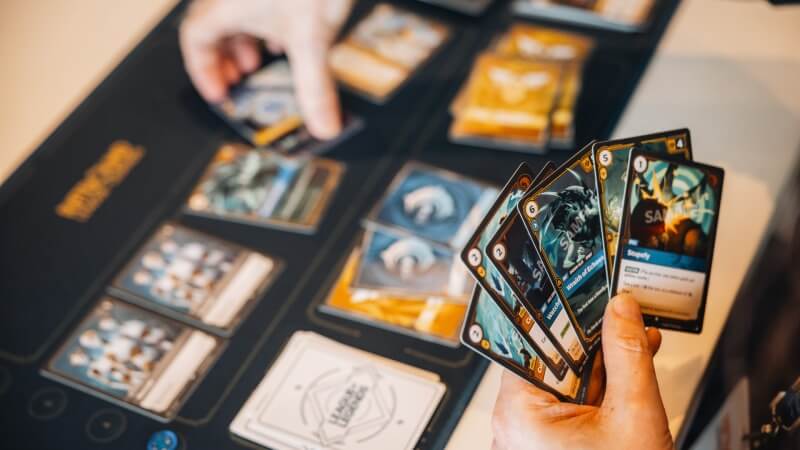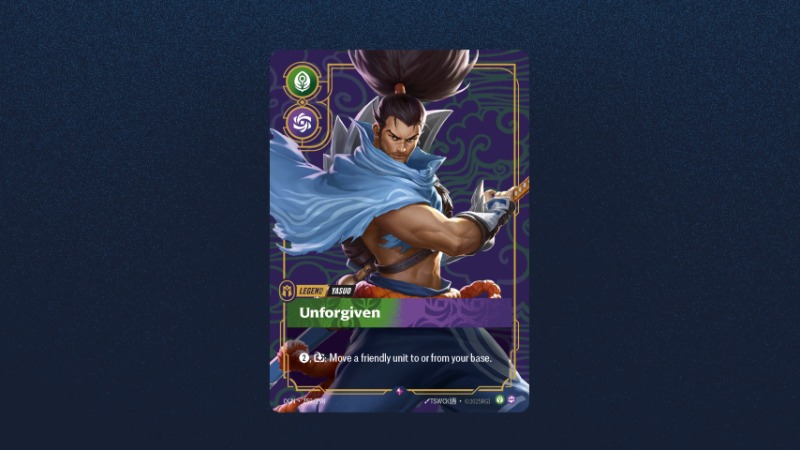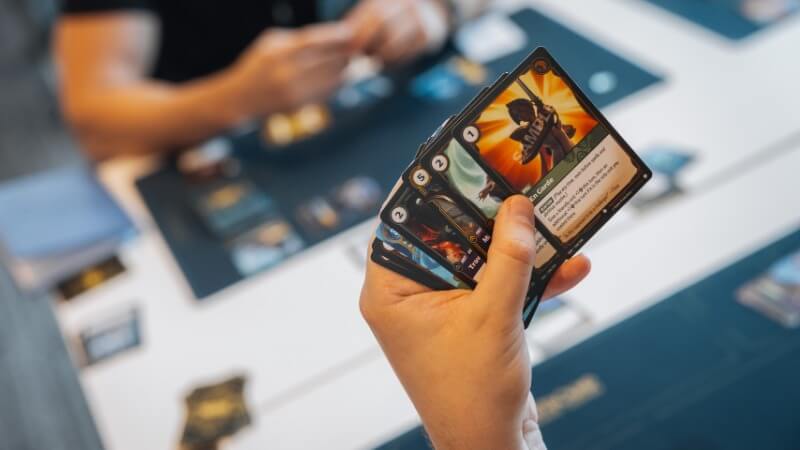Riftbound’s Free-For-Alls Combine Chaos and Strategy In A Promising TCG Package
Photos Courtesy of Riot Games
This past week, Riot Games hosted the Riftbound Summit, an invitational event that showed off more of their upcoming League of Legends-themed trading card game. There were presentations, slideshows, and plenty of opportunities for hands-on time. On top of revealing the game’s booster rates and some of the Champions that will make the jump from MOBA to card stock, there were other new cards shown and even some opportunities for deckbuilding.
If you haven’t read our PAX East preview of Riftbound, that article has a more extensive breakdown of the game’s rules, but the basic gist is that this is a physical trading card game where players fight over Battlefields. If you conquer a Battlefield by defeating all the foes there, you earn a point. If you hold a Battlefield until the start of your next turn, you gain a point for each held. You win the game if you reach eight points and then either control at least one Battlefield until the beginning of their turn, OR conquer all Battlefields in a single turn (while reaching or exceeding eight points). Of course, things become considerably more nuanced when you consider the numerous keywords, abilities, and card types at your disposal, many of which will be at least vaguely familiar to Magic: The Gathering players.
As for the Summit, I got to use each of the four Trial Decks, which are pre-constructed loadouts that will be available to demo in physical stores when the game releases. Each is designed to showcase the unique strengths of that deck’s central Champion, as best represented by three different cards: a Unit card (Champion that will be face up at the start of the game), their Signature Spell (an extremely powerful spell tailored to that Champion), and their Legend card (which starts in play and also defines what colors of cards you can put in your deck). To give an example, one of the decks has a Blue and Yellow Champion Viktor card that spawns weak fighters called Recruits when his non-Recruit allies die, a Legend card that’s Blue and Yellow and lets you spawn Recruits every turn, and a Signature Spell that essentially clears out all Battlefields, which the deck can theoretically capititalize on thanks to its strength at pumping out units.

That said, of the four trial decks, my personal favorite was Yasuo, in large part because he showcases the unique movement-based mechanics that make this game feel unique compared to its peers. Since Riftbound is all about shifting your units between your Base, where they start by default, and Battlefields, this makes it so that abilities that allow you to get units from point A to point B can be quite powerful. In particular, the card Unforgiven, which is the Legend in the Yasuo deck, enables you to move at least one extra time per turn if you can pay the Rune (energy) cost. When combined with Yasuo, who has a potent skill that deals damage to a unit before he even enters a Battlefield, and his Signature Spell that lets you deal damage and ready units that have already moved this turn, it sets up for board wipe situations that are very satisfying to pull off. Essentially, it’s a deck that showcases the potential complexities associated with movement and highlights what’s unique and interesting about this TCG compared to its peers.
And beyond further showcasing Riftbound’s interesting gameplay systems, these matches also drove home just how fun this game’s free-for-all mode can be. Three or four players compete to score eight points first as alliances naturally form and come apart. Because players don’t have health, this means that no one can be eliminated early, avoiding the Magic: The Gathering free-for-all problem where everyone gangs up on the ramp deck before they can get their big boys out (I may still be a bit salty about all the times this happened to me). Additionally, there are other mechanics that encourage interaction between multiple players, like how you can “invite” another person to aid you in a battle against a mutual enemy, which further emphasizes the importance of impromptu diplomacy. This is probably the only TCG I can think of where I preferred the larger multiplayer mode over 1v1, and apparently, many of the cards are specifically designed for this kind of play.

